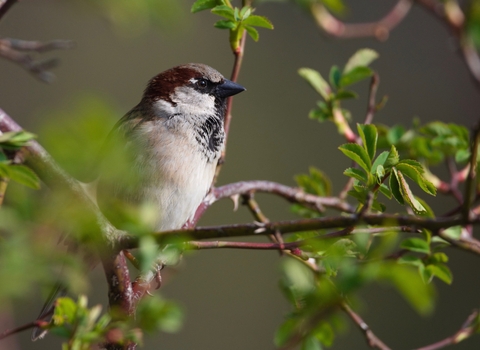House sparrow populations in Worcestershire have declined over recent decades, reflecting similar falls nationally (an almost 70% decline 1977-2018). The Wildlife Sightings scheme aims to put some of their numbers back on the map by encouraging members of the public to report sightings of their feathered neighbours, enabling experts to accurately gauge populations across the county.
Worcestershire Wildlife Trust has partnered with Worcestershire Biological Records Centre, Worcestershire Recorders and county experts to review the data submitted via the scheme.
Worcestershire’s county bird recorder, Craig Reed, has been delighted with results so far “With their loud chipping calls, habit of perching fairly openly and often living in close proximity to us, house sparrows are difficult to miss.
“However, many garden birdwatchers have noticed a decrease in their numbers over many years. Records submitted to our county database showed that there were big gaps in house sparrow distribution so in 2021 we asked the public to let us know where they were seeing house sparrows.
“Unlike many other species of birds, house sparrows remain close to their breeding territories all year round so reporting sightings helps us to build a picture about where they’re likely to be breeding.
“People who submitted house sparrow records in 2021 via the new Wildlife Sightings scheme reported more breeding evidence than was received in total for the 2020 annual bird report.
“This kind of data really helps to expand our knowledge of what’s going on with our house sparrow populations. It can help us to understand whether there are particular problems in areas where there are no birds or, conversely, whether there are large populations elsewhere that could help numbers to increase in the future.”





